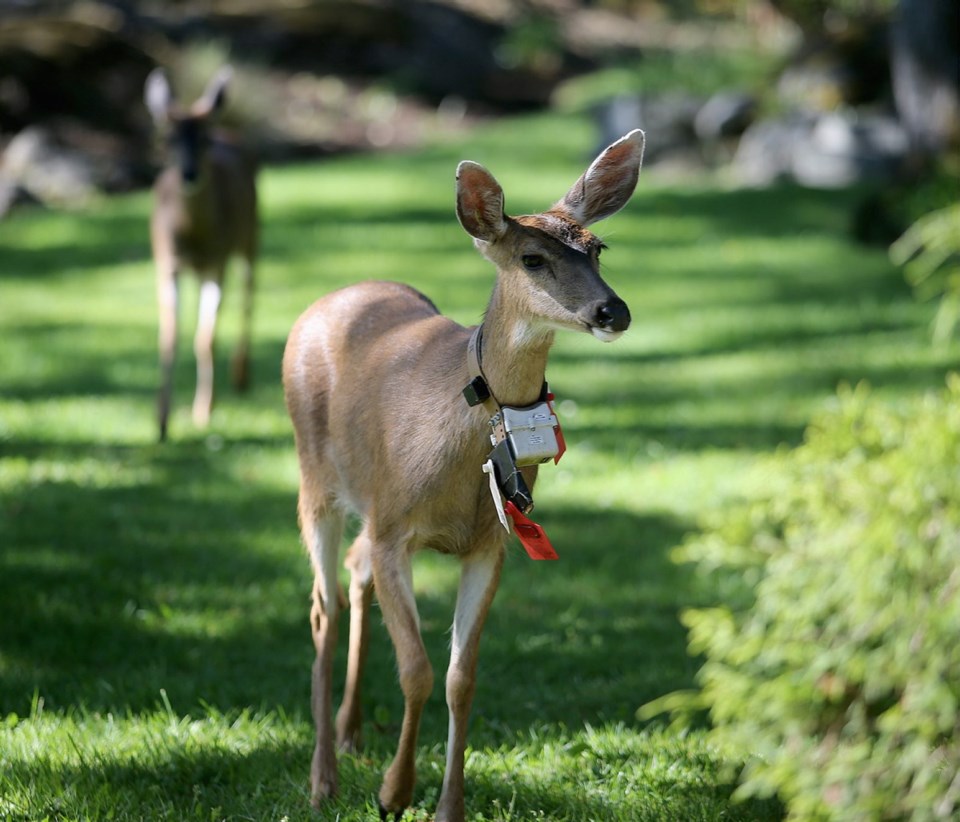A birth-control program for black-tailed deer in Oak Bay should be expanded to other jurisdictions in Greater Victoria, says Esquimalt Coun. Ken Armour.
In a notice of motion, Armour says Oak Bay’s plan to administer a contraceptive vaccine shows promise as a humane way of controlling the deer population.
He wants his township to seek provincial approval for a similar strategy.
“It’s not something we can undertake on our own,” Armour said in an interview. “But given that the province is working with Oak Bay on this, we’re hoping that we can get similar support to do something like that in Esquimalt.”
In addition, he wants the township to ask the Department of National Defence to design a complementary immuno-contraceptive program for its lands at CFB Esquimalt, given that deer roam between the base and the municipality.
He also wants Esquimalt to push the Capital Regional District for a region-wide deer-management strategy based, in part, on immuno-contraception.
“It is a two-pronged approach — getting the provincial agreement and then bringing our neighbours onside,” Armour said.
Oak Bay plans to launch its birth-control program this year in conjunction with the province and the non-profit Urban Wildlife Stewardship Society.
As many as 80 female deer are expected to receive an immuno-contraception vaccine, which induces the does to produce antibodies that prevent fertilization.
A recent census report pegged the number of deer in Oak Bay at anywhere from 72 to 128. The stewardship society found similar numbers of deer in Esquimalt during its 2018 deer count, which estimated the population at 100 to 170.
Armour said Esquimalt residents are increasingly frustrated by the damage that deer cause to plants and by the slow pace of change.
“We hear it so much from a number of people in Esquimalt,” he said. “They know we’re doing deer counts right now, and certainly we’ve provided … lots of education material and so on.
“I think that’s helpful to a point, but I think there’s frustration among the people of Esquimalt that government isn’t taking any further action. Counting them and growing deer-resistant plants is a rather passive approach.”
Mayor Barb Desjardins expressed similar frustration at a recent council meeting, describing the current process as “painfully slow” and asking whether it could be accelerated.
Kristy Kilpatrick, president of the stewardship society, urged patience while the society completes its work in Oak Bay. “Basically, what we’re doing in Oak Bay is running the most robust and cutting-edge research project that’s ever been done on urban deer,” she said.
By attaching GPS collars to 20 does and setting up 39 remote cameras on public and private property, researchers have been able to pinpoint numbers, population density and the home ranges of Oak Bay’s deer.
Then, in late summer or early fall, the female deer will be sedated using a dart and injected with the vaccine. A booster shot will be given by dart from two to six weeks later. Researchers will then wait until spring to determine the impact on the birth rate.
“Good science does take time, so these are steps that need to be completed before [the program] could be expanded,” Kilpatrick said.
“Certainly, the goal is to provide the province with another tool it can offer to communities.”
Kilpatrick noted that Esquimalt has been diligent at surveying residents and completing two of three annual deer counts. “I can understand the frustration, but on the other hand, we’ve always said to Esquimalt: ‘You’ve shown real leadership by going through the steps sequentially.’ ”



